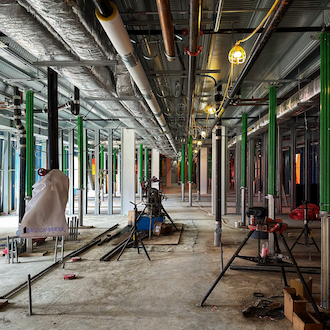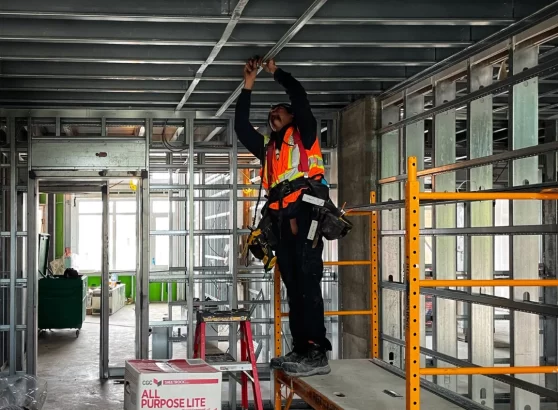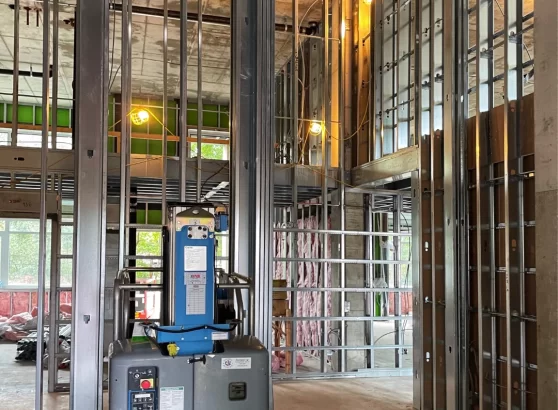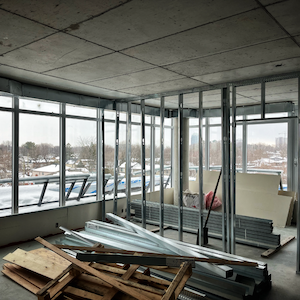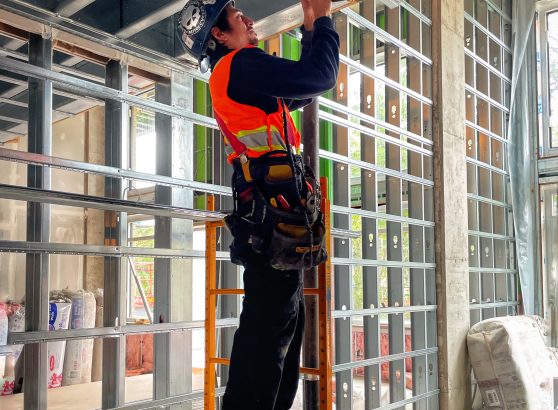In recent years, the influence of steel stud framing in modern architecture has surged, and it’s not hard to see why. Combining practical functionality with unique aesthetics, steel stud framing has opened new horizons for designers and architects. Today, we’re going to explore the aesthetic benefits of steel stud framing and how it’s shaping the architectural landscape of the 21st century.
The Advent of Steel Stud Framing in Modern Architecture
As we journey further into the age of sleek, minimalist designs, the importance of materials that can meet these aesthetic requirements continues to grow. Steel stud framing has been a game-changer in this regard, offering architects an alternative to traditional wood framing that’s both versatile and visually stunning.
Clean Lines and Sleek Structures
One of the most notable aesthetic advantages of steel stud framing is its ability to create clean lines and sleek structures. Unlike wood, steel can be molded and cut with remarkable precision, resulting in sharp, clean lines that fit perfectly within the modernist aesthetic. Steel’s strength also allows for longer spans without support, leading to open, uncluttered spaces and daring architectural designs.
The Industrial Charm
There’s a certain raw beauty and charm to steel that has been embraced in modern architecture. Exposed steel structures can create an industrial aesthetic that’s both chic and sophisticated. It carries a sense of urban cool, making it a popular choice for commercial spaces like offices, restaurants, and art galleries, as well as residential lofts and apartments.
Light and Shadow Play
Steel stud framing, with its angular lines and slender profiles, creates unique opportunities for the play of light and shadow. The interplay between the steel structure and natural light can cast dramatic shadows, adding depth and visual interest to a space. This dynamic quality lends an artistic touch to architectural designs.
Integration with Other Materials
Steel’s versatile aesthetic makes it an excellent partner for a variety of other materials. It pairs well with glass for a minimalist, light-filled space. It also contrasts beautifully with wood, balancing the warmth of organic material with its own cool, industrial vibe. This adaptability opens up a world of creative possibilities for architects and designers.
The Future of Steel in Architecture
Beyond its aesthetic appeal, steel stud framing offers several practical benefits, such as durability, fire resistance, and environmental sustainability, that make it an attractive choice for future construction. As architects continue to experiment with steel, we can expect to see more innovative and aesthetically pleasing uses of this material in the world of design.
In Conclusion: The Aesthetic Appeal of Steel
In modern architecture, the aesthetic appeal of a building is just as important as its functional purpose. Steel stud framing perfectly caters to this dual demand. With its clean lines, industrial charm, and adaptability, steel has become a cornerstone of modern aesthetic trends.
The rise of steel in architecture is a testament to the industry’s continual evolution. As we continue to push the boundaries of what’s possible, steel stud framing will undoubtedly play a significant role in shaping the architectural landscapes of tomorrow.
Whether you’re an architect, designer, or simply someone with a love for modern aesthetics, the exploration of steel’s role in contemporary design offers intriguing insights into the future of architecture.
Contact RGZ Cambridge today for all your steel stud framing needs: We are industry leaders in Commercial and Residential projects. Call us today: 613-695-5544 or reach us via this page.


